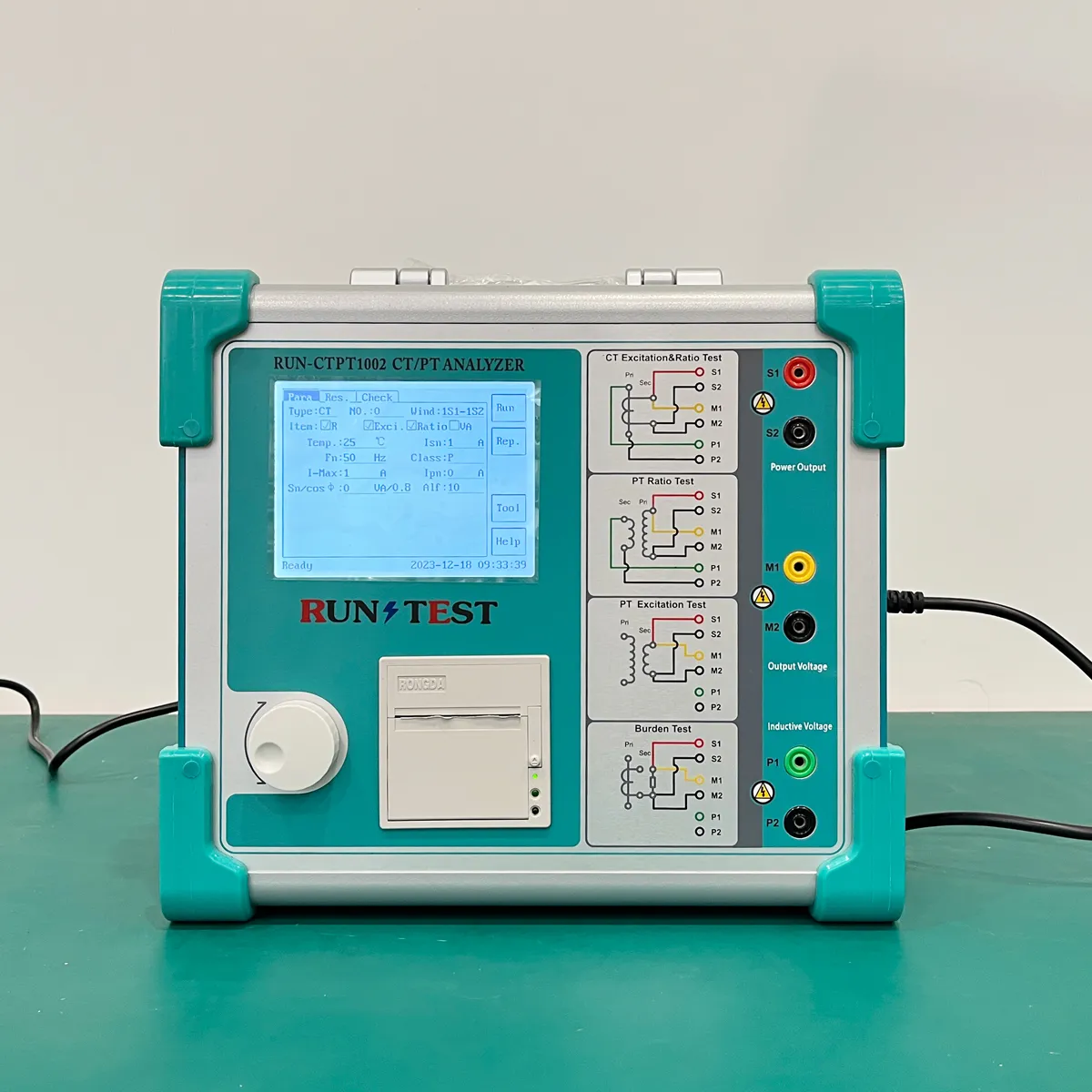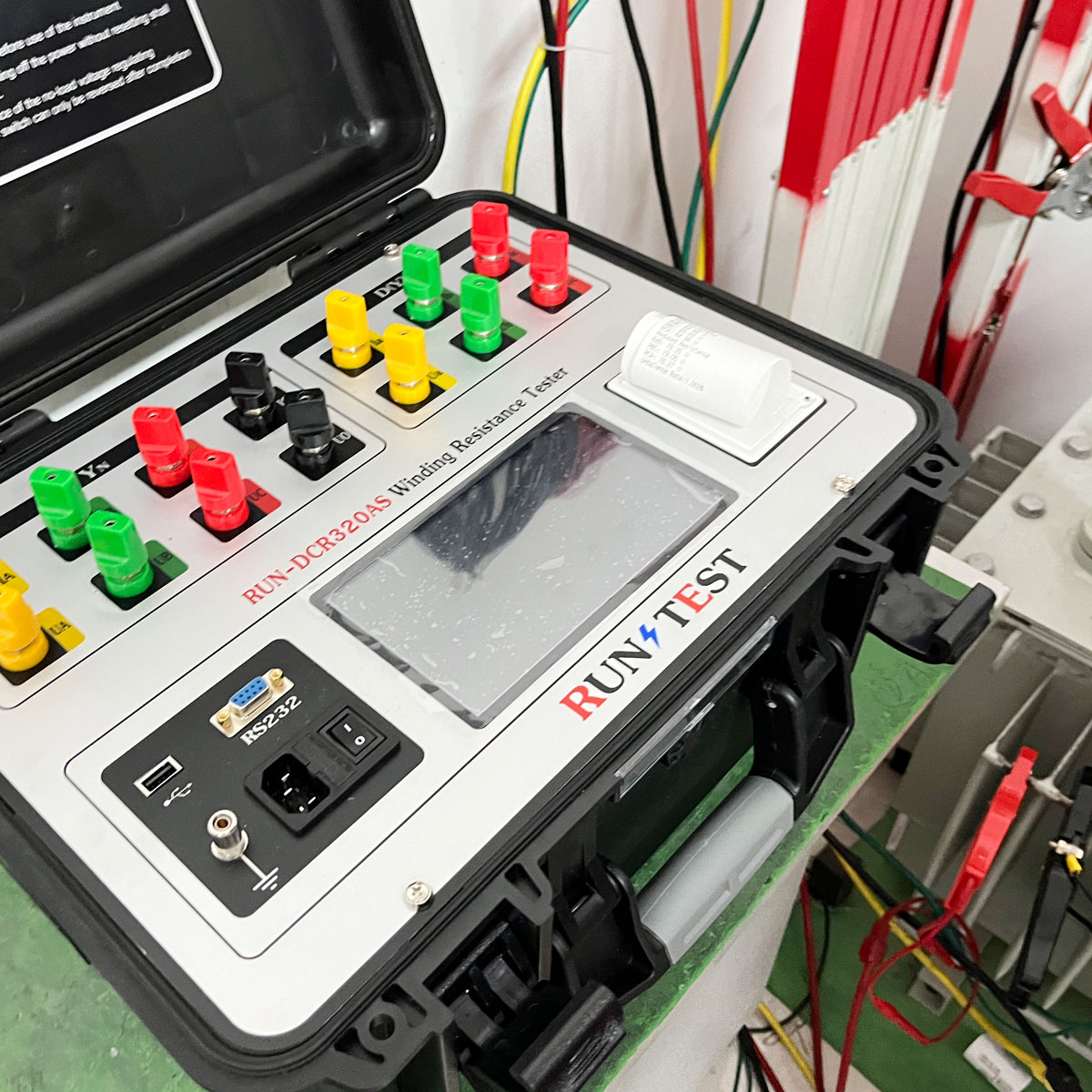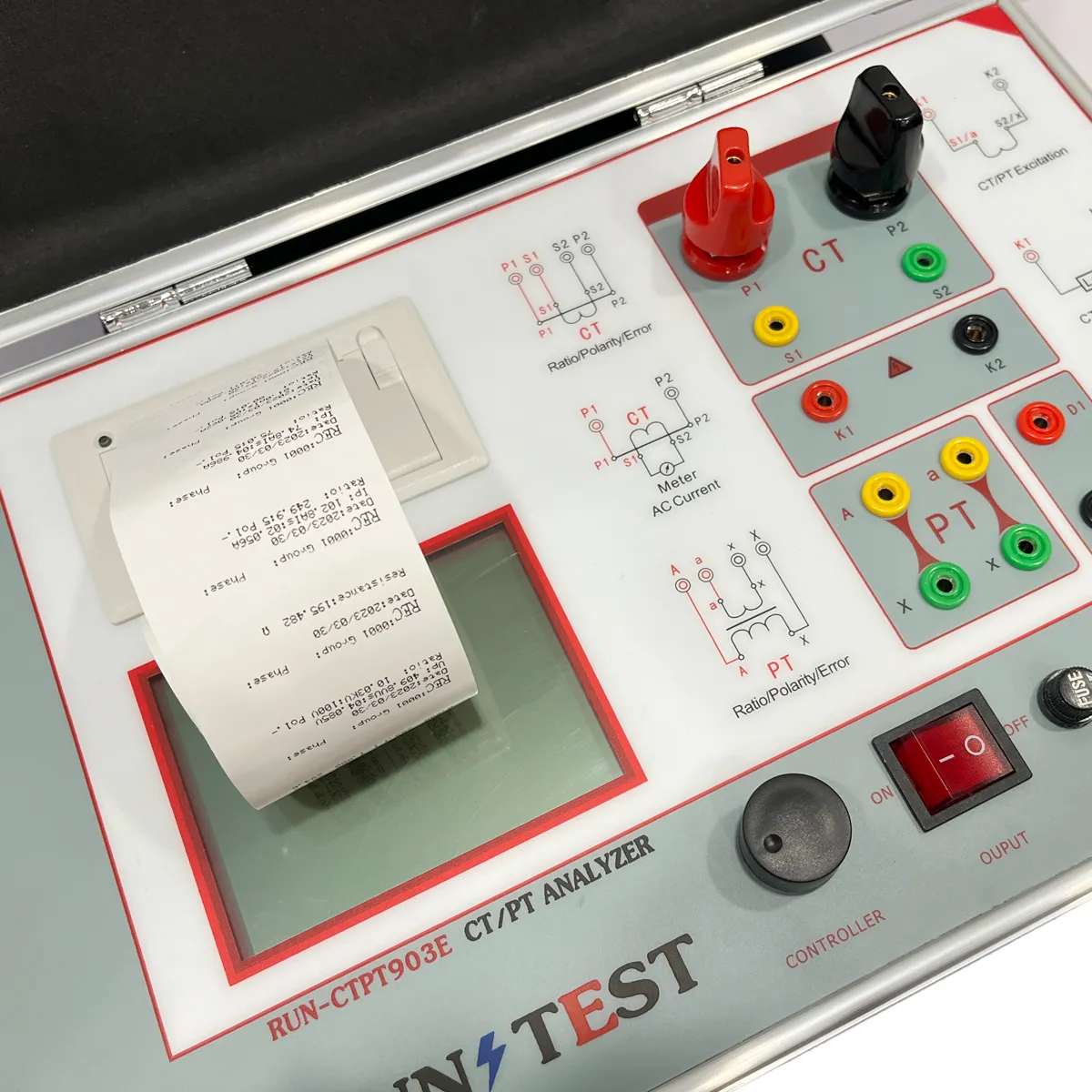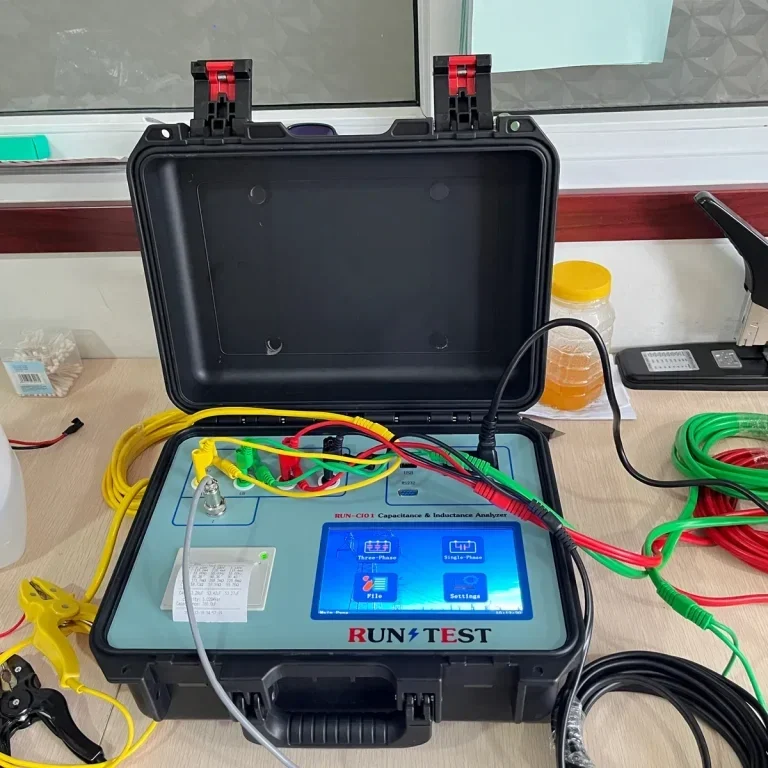transformer test
Transformer testing is essential for ensuring the reliability and efficiency of electrical power systems. Various tests are conducted to assess different parameters of transformers, including their capacity, inductance, insulation integrity, and overall performance. These tests can be performed both in the field and in laboratory settings, depending on the specific requirements and the equipment available.
-

Transformer Winding Resistance Tester with Battery
-

Current Transformer Testing Equipment CT PT Analyzer
-

20A 3 phase transformer winding resistance tester
-

Automatic transformer demagnetization tester transformer degaussing device
-

Transformer Tan Delta and Capacitance Measuring & Dissipation Factor Tester
-

Transformer Tan Delta and Capacitance Dielectric Loss & Dissipation Factor Tester
-

CT PT Analysis CT Ratio Tester PT Polarity Tester
-

Transformer Capacity and Inductance Tester/Meter
-

Transformer On-Load Switch Tap-Changer Analyzer
Transformer Testers in Electrical Engineering
Transformer tester is one of the most important devices for examining a transformer’s quality, reliability, and safety. These tools might be used to make the very tests that identify various aspects of a transformer so that the electric networks could work in the most economical way.
Key Transformer Tests
1. Winding Resistance Measurement
Purpose: Detect issues like shorted turns, loose connections, or problems with the tap changer.
2. Turns Ratio Testing
Purpose: Verify the correct turns ratio between the primary and secondary windings to ensure the transformer provides the right voltage levels.
3. Frequency Response Analysis
Purpose: Identify winding movements and mechanical integrity issues inside the transformer.
Regularly checking for transformers is essential in engineering not just to keep the transformers in good, safe and efficient condition in the electrical networks but also to ensure that the system is maintained reliably by early detection of problems and that costly system failures are avoided.
